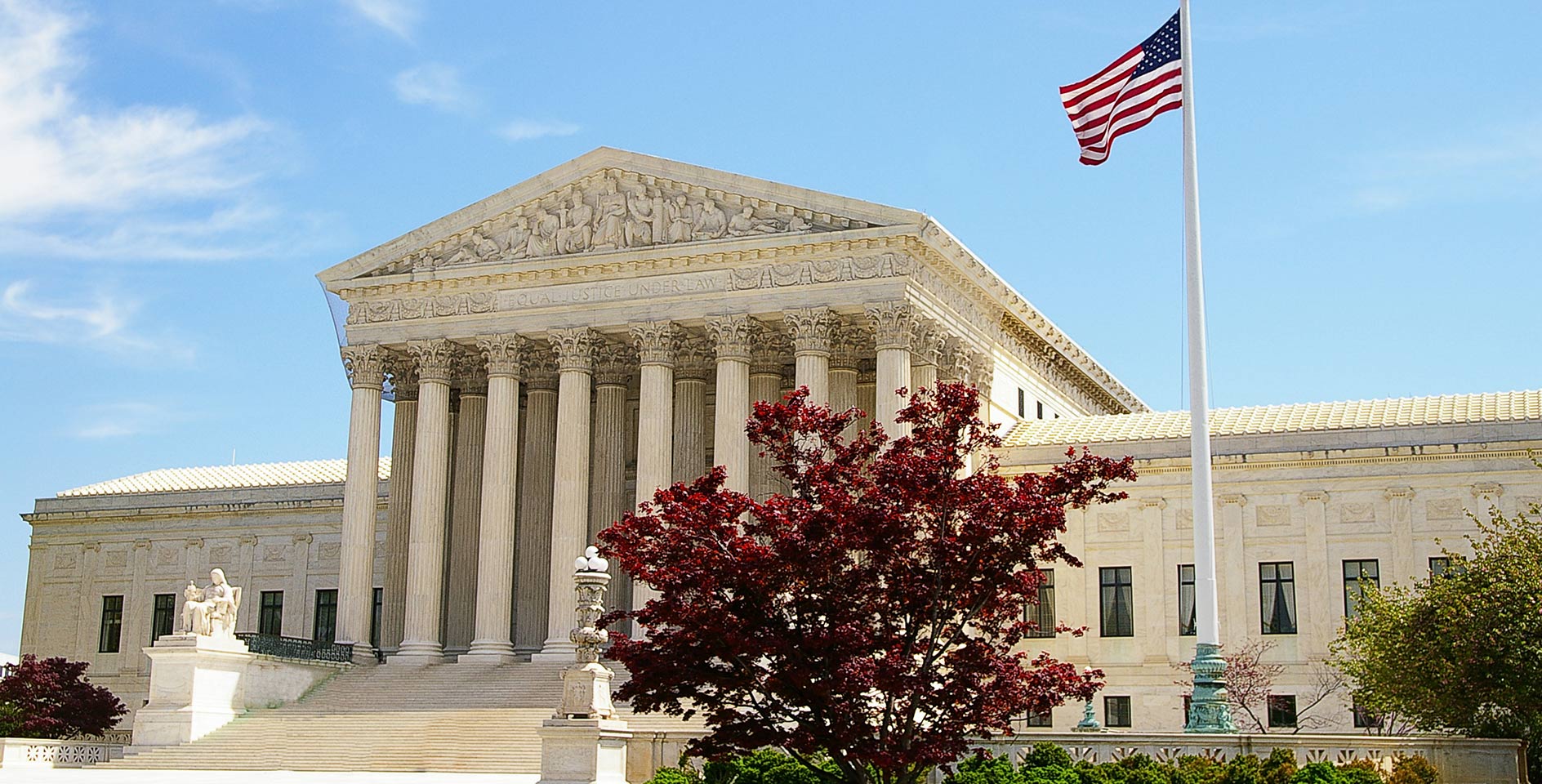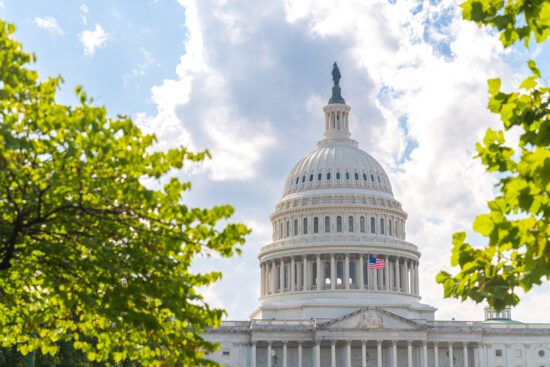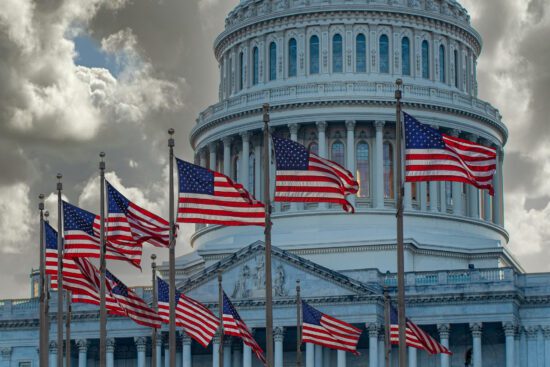Today the Supreme Court ruled 5-4 in favor of pro-life pregnancy centers in National Institute of Family and Life Advocates v. Becerra. The case concerned the issue of whether the state of California could force pro-life pregnancy centers to provide information to their patients on ways to obtain an abortion and require these centers to promote other government-written messages. You can find our explainer of the case and today’s ruling here.
This decision by the Court is a victory for free speech, religious liberty, and the sanctity of human life. Under the precedent set by this ruling, pro-life centers will not be required to compromise their principles by advertising for abortions, a violation of their most deeply held convictions and beliefs. As a result of this decision, these centers will be protected from future encroachments on their ultimate goal of reaching women with a gospel-driven message of love and dignity for all human life.
The majority opinion was written by Justice Thomas and joined by Chief Justice Roberts, and Justices Kennedy, Gorsuch, and Alito. Justice Kennedy wrote a separate concurring opinion, which was joined by the Chief Justice, and Justices Kennedy and Alito. Justice Breyer, joined by Justices Sotomayor, Ginsburg, and Kagan wrote a dissenting opinion. Below are key quotes from these opinions highlighting how the Supreme Court reached its decision. Page numbers from the Court’s slip opinion are given for each quote, but legal citations are omitted for clarity of reading.
Majority Opinion | Authored by Justice Thomas
“The licensed notice is a content-based regulation of speech. By compelling individuals to speak a particular message, such notices “alte[r] the content of [their] speech.” (7)
“By requiring petitioners to inform women how they can obtain state-subsidized abortions—at the same time petitioners try to dissuade women from choosing that option— the licensed notice plainly “alters the content” of petitioners’ speech.” (7)
“This Court’s precedents do not permit governments to impose content-based restrictions on speech without “‘persuasive evidence . . . of a long (if heretofore unrecognized) tradition’” to that effect.” (8)
“Most obviously, the licensed notice is not limited to ‘purely factual and uncontroversial information about the terms under which . . . services will be available.’ The notice in no way relates to the services that licensed clinics provide. Instead, it requires these clinics to disclose information about state-sponsored services— including abortion, anything but an ‘uncontroversial’ topic.” (9)
“The licensed notice at issue here is not an informed consent requirement or any other regulation of professional conduct. The notice does not facilitate informed consent to a medical procedure. In fact, it is not tied to a procedure at all. It applies to all interactions between a covered facility and its clients, regardless of whether a medical procedure is ever sought, offered, or performed.” (11)
“As with other kinds of speech, regulating the content of professionals’ speech ‘pose[s] the inherent risk that the Government seeks not to advance a legitimate regulatory goal, but to suppress unpopular ideas or information.”’ (12)
“Throughout history, governments have “manipulat[ed] the content of doctor-patient discourse” to increase state power and suppress minorities:
For example, during the Cultural Revolution, Chinese physicians were dispatched to the countryside to convince peasants to use contraception. In the 1930s, the Soviet government expedited completion of a construction project on the Siberian railroad by ordering doctors to both reject requests for medical leave from work and conceal this government order from their patients. In Nazi Germany, the Third Reich systematically violated the separation between state ideology and medical discourse. German physicians were taught that they owed a higher duty to the ‘health of the Volk’ than to the health of individual patients. Recently, Nicolae Ceausescu’s strategy to increase the Romanian birth rate included prohibitions against giving advice to patients about the use of birth control devices and disseminating information about the use of condoms as a means of preventing the transmission of AIDS.” (12–13)
“Further, when the government polices the content of professional speech, it can fail to ‘preserve an uninhibited marketplace of ideas in which truth will ultimately prevail.’ […] ‘[T]he best test of truth is the power of the thought to get itself accepted in the competition of the market,’ Abrams v. United States, 250 U. S. 616, 630 (1919) (Holmes, J., dissenting), and the people lose when the government is the one deciding which ideas should prevail.” (13)
“States cannot choose the protection that speech receives under the First Amendment, as that would give them a powerful tool to impose “invidious discrimination of disfavored subjects.” (14)
“If California’s goal is to educate low-income women about the services it provides, then the licensed notice is ‘wildly underinclusive.’ Such ‘[u]nderinclusiveness raises serious doubts about whether the government is in fact pursuing the interest it invokes, rather than disfavoring a particular speaker or viewpoint.”’ (15)
“Further, California could inform low-income women about its services ‘without burdening a speaker with unwanted speech.’ Here, for example, individuals might not have enrolled in California’s services because they do not want them, or because California spent insufficient resources on the advertising campaign. Either way, California cannot co-opt the licensed facilities to deliver its message for it. ‘[T]he First Amendment does not permit the State to sacrifice speech for efficiency.”’ (16)
‘“Thus, a facility that advertises and provides pregnancy tests is covered by the unlicensed notice, but a facility across the street that advertises and provides nonprescription contraceptives is excluded—even though the latter is no less likely to make women think it is licensed. This Court’s precedents are deeply skeptical of laws that ‘distinguis[h] among different speakers, allowing speech by some but not others.”’ (19)
Concurring Opinion | Authored by Justice Kennedy
“This separate writing seeks to underscore that the apparent viewpoint discrimination here is a matter of serious constitutional concern.” (1)
“It does appear that viewpoint discrimination is inherent in the design and structure of this Act. This law is a paradigmatic example of the serious threat presented when government seeks to impose its own message in the place of individual speech, thought, and expression.” (1)
“For here the State requires primarily pro-life pregnancy centers to promote the State’s own preferred message advertising abortions. This compels individuals to contradict their most deeply held beliefs, beliefs grounded in basic philosophical, ethical, or religious precepts, or all of these. And the history of the Act’s passage and its underinclusive application suggest a real possibility that these individuals were targeted because of their beliefs.” (1-2)
“The California Legislature included in its official history the congratulatory statement that the Act was part of California’s legacy of “forward thinking.” But it is not forward thinking to force individuals to “be an instrument for fostering public adherence to an ideological point of view [they] fin[d] unacceptable.” (2)
“It is forward thinking to begin by reading the First Amendment as ratified in 1791; to understand the history of authoritarian government as the Founders then knew it; to confirm that history since then shows how relentless authoritarian regimes are in their attempts to stifle free speech; and to carry those lessons onward as we seek to preserve and teach the necessity of freedom of speech for the generations to come.” (2)
“Governments must not be allowed to force persons to express a message contrary to their deepest convictions. Freedom of speech secures freedom of thought and belief. This law imperils those liberties.” (2)
Dissenting Opinion | Authored by Justice Breyer
“The Court, in justification, refers to widely accepted First Amendment goals, such as the need to protect the Nation from laws that ‘suppress unpopular ideas or information’ or inhibit the ‘marketplace of ideas in which truth will ultimately prevail.’ Ante, at 12–13; see New York Times Co. v. Sullivan, 376 U. S. 254, 269 (1964).The concurrence highlights similar First Amendment interests. Ante, at 2. I, too, value this role that the First Amendment plays—in an appropriate case. But here, the majority enunciates a general test that reaches far beyond the area where this Court has examined laws closely in the service of those goals. And, in suggesting that heightened scrutiny applies to much economic and social legislation, the majority pays those First Amendment goals a serious disservice through dilution. Using the First Amendment to strike down economic and social laws that legislatures long would have thought themselves free to enact will, for the American public, obscure, not clarify, the true value of protecting freedom of speech.” (7)
“If a State can lawfully require a doctor to tell a woman seeking an abortion about adoption services, why should it not be able, as here, to require a medical counselor to tell a woman seeking prenatal care or other reproductive healthcare about childbirth and abortion services? As the question suggests, there is no convincing reason to distinguish between information about adoption and information about abortion in this context. After all, the rule of law embodies evenhandedness, and ‘what is sauce for the goose is normally sauce for the gander.’” (11-12)
“The Act requires these medical professionals to disclose information about the possibility of abortion (including potential financial help) that is as likely helpful to granting “informed consent” as is information about the possibility of adoption and childbirth (including potential financial help). That is why I find it impossible to drive any meaningful legal wedge between the law, as interpreted in Casey, and the law as it should be applied in this case.” (13)
“I agree that ‘in the fields of medicine and public health, . . . information can save lives,’ but the licensed disclosure serves that informational interest by requiring clinics to notify patients of the availability of state resources for family planning services, prenatal care, and abortion, which—unlike the majority’s examples of normative statements, ante, at 13—is truthful and non misleading information. Abortion is a controversial topic and a source of normative debate, but the availability of state resources is not a normative statement or a fact of debatable truth.” (17)
“But we can do our best to interpret American constitutional law so that it applies fairly within a Nation whose citizens strongly hold these different points of view. That is one reason why it is particularly important to interpret the First Amendment so that it applies evenhandedly as between those who disagree so strongly.” (17)
“This insistence, the need for evenhandedness, should prove particularly weighty in a case involving abortion rights. That is because Americans hold strong, and differing, views about the matter. Some Americans believe that abortion involves the death of a live and innocent human being. Others believe that the ability to choose an abortion is ‘central to personal dignity and autonomy,’ Casey, 505 U. S., at 851, and note that the failure to allow women to choose an abortion involves the deaths of innocent women.” (17)
“The petitioners argue that it unconstitutionally discriminates on the basis of viewpoint because it primarily covers facilities with supporters, organizers, and employees who are likely to hold strong pro-life views. They contend that the statute does not cover facilities likely to hold neutral or pro-choice views, because it exempts facilities that enroll patients in publicly funded programs that include abortion. In doing so, they say, the statute unnecessarily imposes a disproportionate burden upon facilities with pro-life views, the very facilities most likely to find the statute’s references to abortion morally abhorrent.” (18)









